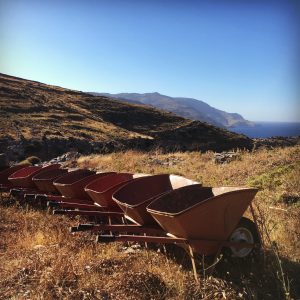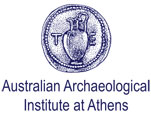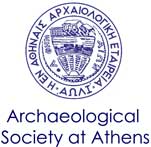What happens to the finds we uncover while digging at Zagora? I spoke to two of the co-directors, Dr Stavros Paspalas and Professor Margaret Miller, to discuss the process.
At the end of each day in the field, all excavated artefacts are taken to the Archaeological Museum of Andros. This is part of the permit conditions from the Hellenic Ministry of Culture. All artefact cleaning and analysis is undertaken at the museum.
All artefacts are initially sorted on the basis of the context in which they were excavated and the material type. They are then cleaned, also based on material type. Bone and metal are often brushed clean rather than washed, to prevent further decomposition.
Pottery, which is the main artefact type excavated at Zagora, is soaked overnight to assist with cleaning, then washed and dried. The pottery is then ready to be sorted by fabric and function for analysis. Information regarding the dating of the pottery can be gathered at this stage and is then passed on to the excavators, who gain an idea regarding the dates of the features they are revealing. The team on site and the team in the museum regularly update each other and discuss the site and artefacts. This helps with site interpretation and further excavation decisions.

All pottery fragments, or sherds, are recorded and weighed. They are added to the site database and provide information on the various types of pottery used in each area of the site. If possible, sherds are pieced back together and processed as an individual find. These pieces, along with other diagnostic pieces, are photographed and drawn. Diagnostic pieces generally include rims, handles and bases as well as pieces that bear painted, relief or incised decoration. They provide information on the shape of the vessel and thus the use to which it was put and the tasks that may have been undertaken in the area of the site in which they were excavated.
The fabric of sherds and any decoration they may bear also provides information on the use of the vessel from which they derive. Coarse ware sherds are generally used for storage and food preparation, whereas fine ware sherds are commonly used for eating, drinking and pouring. Fine ware vessels are often decorated; the more detailed the decoration the easier they are to identify and date. Keep in mind, though, that certain categories of coarse ware vessels also bear intricate decoration. Zagora has to date yielded some particularly interesting ornamentation on the large storage jars known as pithoi, seemingly only on the side that faced the room in which they stood.

All artefacts are cleaned and logged and preliminary documentation is completed before the end of the field season. They are then stored in the museum, where they are readily accessible for specialist analysis in the future. Copies of all excavation records are passed onto the Hellenic Ministry of Culture as part of the permit conditions.
Often humble, but sometimes spectacular, sherds provide insights into the lives, beliefs, myths, and connections of the population who lived at Zagora nearly 3000 years ago. Many examples from earlier seasons can be seen in the extensive Zagora section of the Andros Museum in Chora.





